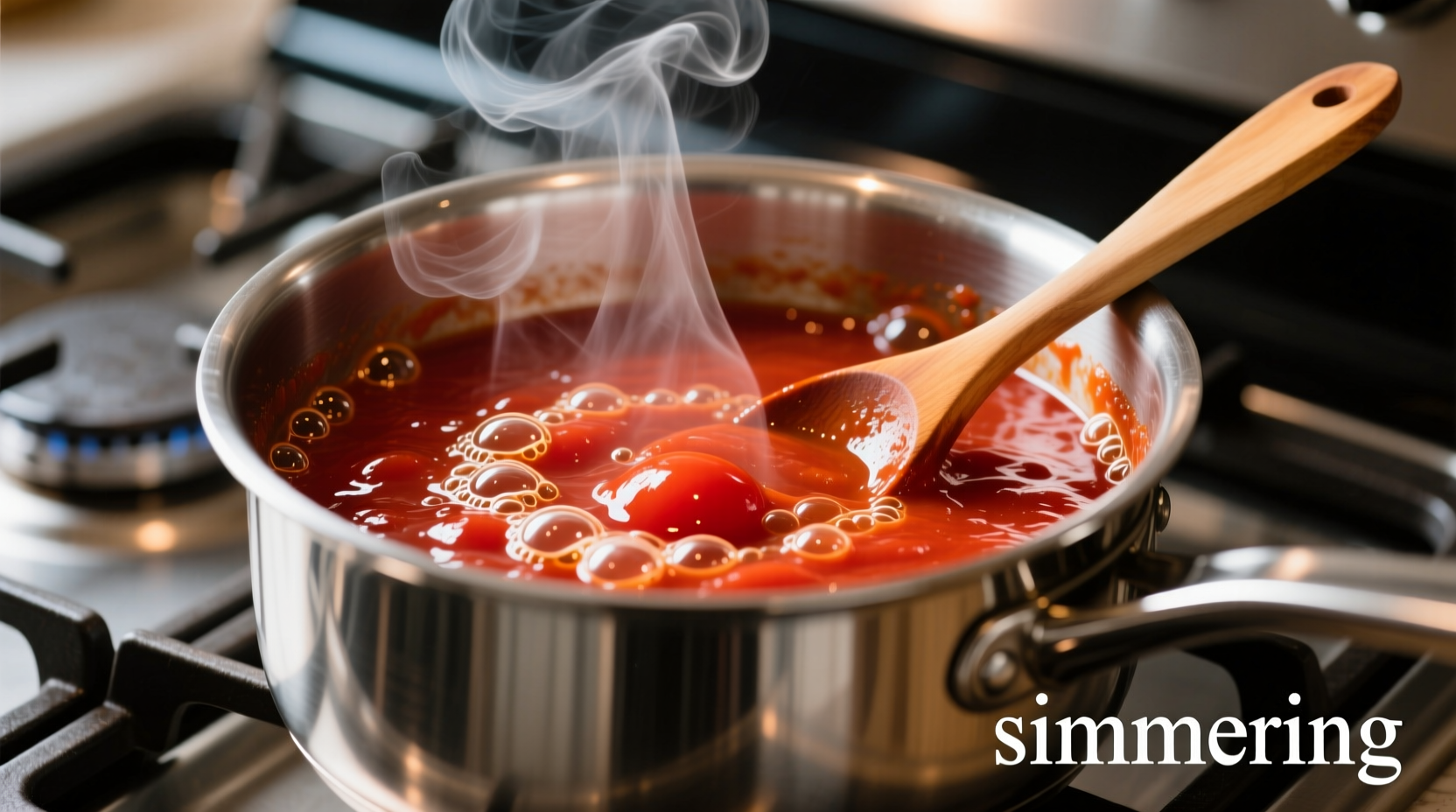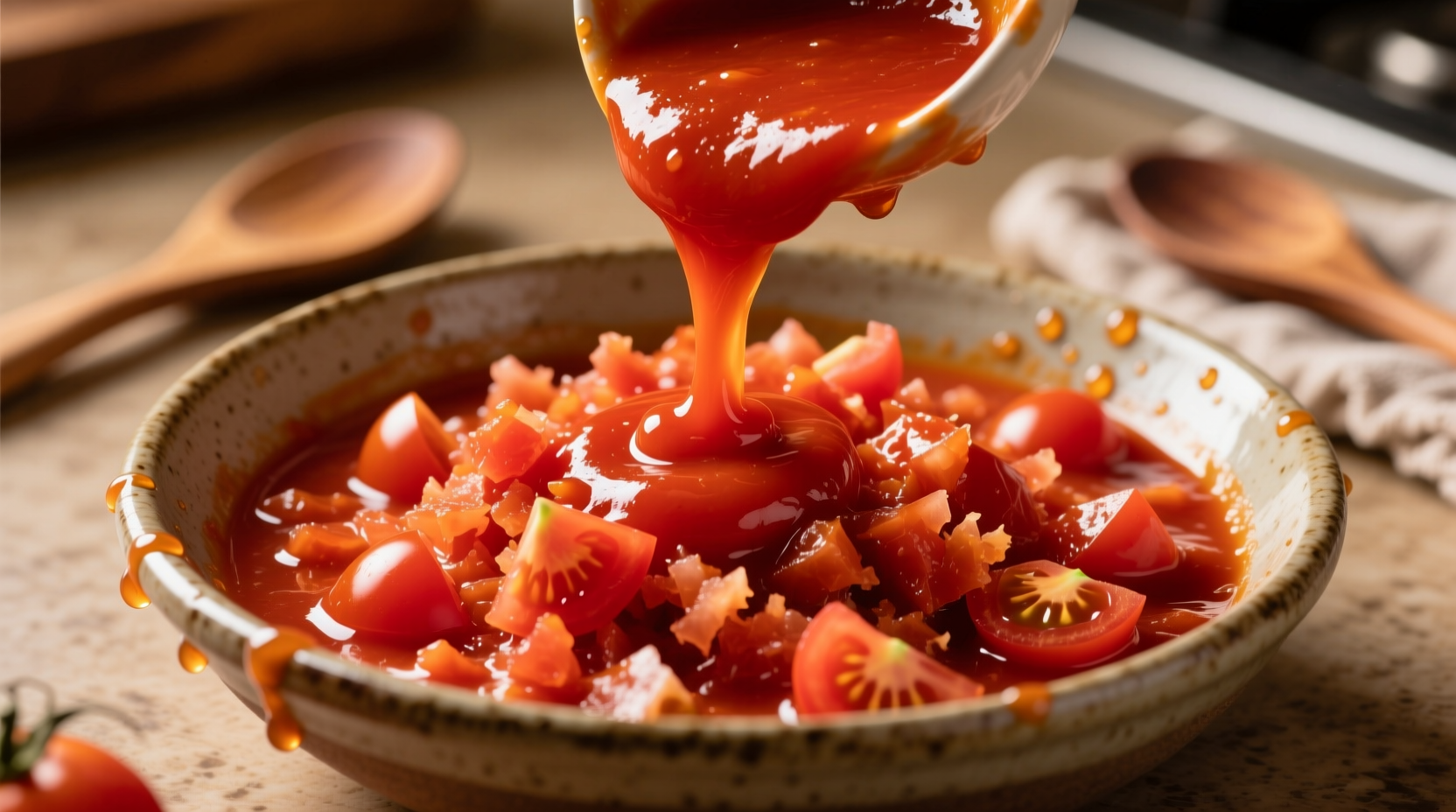Tomato sauce made with crushed tomatoes delivers superior texture and flavor depth compared to sauces made with whole or diced tomatoes. The partially broken-down consistency of crushed tomatoes creates a perfect balance between smoothness and body, requiring less cooking time to achieve restaurant-quality results while preserving fresh tomato flavor.
Ever wonder why your homemade tomato sauce never quite matches the rich, velvety texture of your favorite Italian restaurant? The secret often lies in your choice of tomato base. Using crushed tomatoes as your foundation transforms ordinary sauce into something extraordinary—and we'll show you exactly how to leverage this pantry staple for consistently impressive results.
Why Crushed Tomatoes Outperform Other Tomato Products
Understanding the difference between tomato products is crucial for sauce success. Unlike whole peeled tomatoes that require extensive breaking down or tomato paste that needs dilution, crushed tomatoes offer the ideal starting point for sauce creation. Their partially processed texture provides immediate body while still maintaining enough structure to develop complex flavors during cooking.
| Tomato Product | Texture Characteristics | Best Sauce Applications | Processing Time Required |
|---|---|---|---|
| Crushed Tomatoes | Partially broken, uniform consistency with small fragments | Marinara, arrabbiata, basic tomato sauces | Minimal (15-20 minutes) |
| Whole Peeled Tomatoes | Intact tomatoes in juice | Chunky vegetable sauces, slow-cooked ragus | Extensive (45+ minutes) |
| Diced Tomatoes | Uniform cubes in liquid | Sauces where texture is desired, chili | Moderate (30 minutes) |
| Tomato Puree | Smooth, thick liquid | Base for creamy sauces, soups | None (ready to use) |
The Science Behind Superior Sauce Texture
Food scientists at the University of California, Davis have documented how the mechanical processing of crushed tomatoes releases pectin and natural sugars more effectively than whole tomatoes. This research confirms that crushed tomatoes develop richer flavor compounds during the Maillard reaction phase of cooking compared to other tomato forms.
"The partially broken cell structure of crushed tomatoes allows for faster flavor development while maintaining desirable body," explains Dr. Maria Rossi, food science researcher at UC Davis. "This creates a textural sweet spot that's neither too chunky nor too smooth."
Step-by-Step: Crafting Perfect Crushed Tomato Sauce
Follow this professional technique for consistently excellent results:
Ingredient Selection Guide
- Tomatoes: Choose San Marzano DOP-certified crushed tomatoes for authentic Italian flavor
- Acid balance: Keep lemon juice or red wine vinegar nearby to adjust pH if needed
- Flavor enhancers: Fresh basil, garlic, and extra virgin olive oil make the difference
The 20-Minute Professional Method
- Heat 2 tbsp extra virgin olive oil in a heavy-bottomed pot over medium heat
- Sauté 3 minced garlic cloves until fragrant (about 1 minute)
- Add 1 (28-ounce) can crushed tomatoes with their juices
- Stir in 1 tsp salt, 1/4 tsp black pepper, and 5 fresh basil leaves
- Simmer uncovered for 15-20 minutes, stirring occasionally
- Remove basil leaves and adjust seasoning before serving

Avoiding Common Sauce Pitfalls
Even experienced cooks encounter these issues when working with crushed tomatoes:
Texture Troubleshooting
- Too thin: Simmer uncovered longer to reduce liquid content
- Too thick: Add reserved pasta water (1/4 cup at a time)
- Excessive acidity: Add 1/4 tsp baking soda or a carrot (remove before serving)
Context Boundaries: When Crushed Tomatoes Aren't Ideal
While crushed tomatoes excel for most basic sauces, certain applications require different tomato forms:
- Slow-cooked meat sauces: Whole peeled tomatoes provide better texture development over long cooking times
- Creamy tomato soups: Tomato puree creates a smoother base
- Chunky vegetable sauces: Diced tomatoes maintain desirable texture
Historical Evolution of Tomato Sauce Techniques
The use of crushed tomatoes in sauce preparation represents a modern evolution of traditional Italian cooking methods. Historical records from the Italian National Library show that early tomato sauces relied on hand-chopped tomatoes, a labor-intensive process that limited accessibility.
1800s: Tomatoes hand-chopped for sauces in Italian households
Early 1900s: Canned whole tomatoes become commercially available
1930s: First mechanically crushed tomato products introduced
1970s: Crushed tomatoes gain popularity as time-saving alternative
Today: Crushed tomatoes represent 38% of all tomato product sales for sauce making (USDA Food Sales Data)
Creative Variations to Elevate Your Sauce
Transform your basic crushed tomato sauce with these professional variations:
Regional Italian Twists
- Sicilian: Add 1/4 cup chopped olives and 2 tbsp capers
- Naples: Incorporate 1/2 cup red wine during simmering
- Rome: Stir in 2 tbsp Pecorino Romano at the end
Dietary Adaptations
- Vegan: Use nutritional yeast instead of cheese for umami
- Low-sodium: Choose no-salt-added crushed tomatoes and boost flavor with herbs
- Extra protein: Blend in cooked lentils for vegetarian option
Storage and Preservation Guidelines
Proper storage maintains your sauce's quality and safety. Follow these USDA-recommended practices from the Food Safety and Inspection Service:
- Refrigeration: Store in airtight container for up to 5 days
- Freezing: Portion into ice cube trays, then transfer to freezer bags (6 months)
- Canning: Requires proper acidification (pH below 4.6) and pressure canning
Expert Tips for Sauce Perfection
Professional chefs rely on these techniques to maximize flavor from crushed tomatoes:
- Reserve pasta water: The starchy liquid helps sauce adhere to noodles
- Finish cooking pasta in sauce: Transferring partially cooked pasta to the sauce completes cooking while absorbing flavors
- Add fat last: Stir in olive oil or butter at the end for brighter flavor
- Underseason initially: Flavors concentrate as sauce reduces—adjust at the end











 浙公网安备
33010002000092号
浙公网安备
33010002000092号 浙B2-20120091-4
浙B2-20120091-4